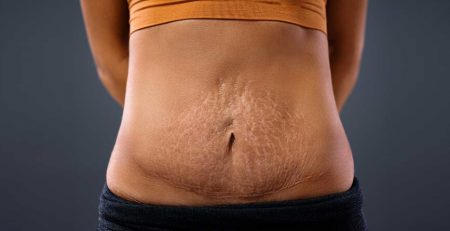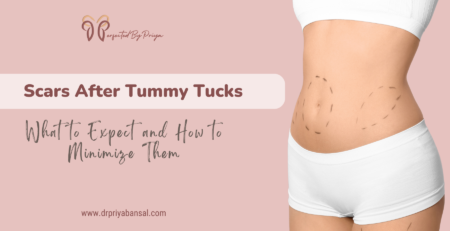Tummy Tuck Surgery – Benefits, Procedure, Recovery & Cost

Tummy Tuck Surgery – A Complete Guide to Abdominoplasty
Excess fat, sagging skin, and weakened abdominal muscles can often be difficult to correct through diet and exercise alone. Tummy Tuck Surgery, also known as abdominoplasty, has become one of the most popular cosmetic procedures for individuals seeking a toned and sculpted midsection. This blog explores the benefits, procedure, recovery, risks, and cost of tummy tuck surgery while helping you understand if it’s the right option for you.
What is Tummy Tuck Surgery?
Tummy Tuck Surgery is a cosmetic surgical procedure designed to remove excess skin and fat from the abdomen while tightening weakened abdominal muscles. The result is a flatter, firmer, and more aesthetically pleasing midsection.
Unlike liposuction, which only removes fat, tummy tuck surgery also addresses loose skin and stretched abdominal muscles—often caused by pregnancy, significant weight loss, or aging.
Who is an Ideal Candidate for Tummy Tuck Surgery?
Not everyone is a suitable candidate for abdominoplasty. Surgeons usually recommend tummy tuck surgery for:
-
Individuals with excess abdominal skin after pregnancy or major weight loss.
-
Those with weakened or separated abdominal muscles (diastasis recti).
-
People who struggle with stubborn belly fat despite diet and exercise.
-
Patients who are in good overall health and non-smokers.
-
Individuals with realistic expectations regarding the results.
👉 Note: Tummy tuck surgery is not a weight loss procedure; rather, it is a body contouring treatment.
Types of Tummy Tuck Surgery
Depending on your body type, skin condition, and desired results, different techniques may be used.
1. Full Tummy Tuck
-
Involves a hip-to-hip incision.
-
Removes excess skin and fat from both the upper and lower abdomen.
-
Tightens abdominal muscles for a sculpted look.
2. Mini Tummy Tuck
-
Focuses only on the lower abdomen below the navel.
-
Smaller incision, less recovery time.
-
Ideal for patients with mild skin laxity and fat deposits.
3. Extended Tummy Tuck
-
Recommended for individuals with significant skin laxity, often after massive weight loss.
-
Involves extended incisions around the hips and flanks for enhanced contouring.
Step-by-Step Procedure of Tummy Tuck Surgery
1. Anesthesia
The procedure begins with general anesthesia to ensure patient comfort.
2. Incision
The surgeon makes a horizontal incision between the pubic hairline and belly button. The length of the incision depends on the type of tummy tuck.
3. Muscle Repair & Skin Removal
-
The surgeon tightens weakened abdominal muscles.
-
Excess skin is trimmed, and fat is removed.
4. Navel Repositioning
In a full tummy tuck, the belly button may be repositioned for a natural appearance.
5. Closing the Incision
The surgeon closes the incision with sutures, followed by dressing and compression garments to aid healing.
Benefits of Tummy Tuck Surgery
Patients choose tummy tuck surgery for both aesthetic and medical reasons.
-
Flatter and toned abdomen for a youthful silhouette.
-
Repair of abdominal muscles stretched by pregnancy or obesity.
-
Reduction of stretch marks in the treated area.
-
Improved posture due to stronger core muscles.
-
Boosted self-confidence and body image.
-
Better fit in clothing leading to improved lifestyle satisfaction.
Recovery After Tummy Tuck Surgery
Recovery is a crucial stage that determines the final outcome.
Immediate Recovery
-
Patients may experience swelling, bruising, and discomfort.
-
Drains may be placed to prevent fluid buildup.
-
Pain medication and antibiotics are prescribed.
First 2 Weeks
-
Patients should wear compression garments.
-
Avoid strenuous activities.
-
Light walking is encouraged to prevent blood clots.
4 to 6 Weeks
-
Most patients return to work within 2–3 weeks (depending on the type of tummy tuck).
-
Full recovery may take 6–8 weeks.
Long-Term Results
With proper diet, exercise, and lifestyle maintenance, results can be long-lasting.
Risks and Complications
Like all surgeries, Tummy Tuck Surgery comes with potential risks, though complications are rare when performed by an experienced plastic surgeon. Possible risks include:
-
Infection or bleeding.
-
Poor wound healing.
-
Numbness or changes in skin sensation.
-
Fluid accumulation (seroma).
-
Visible scarring (which usually fades over time).
Cost of Tummy Tuck Surgery
The cost of tummy tuck surgery varies depending on several factors:
-
Surgeon’s expertise and reputation.
-
Clinic or hospital facilities.
-
Type of tummy tuck (mini, full, extended).
-
Location of the clinic.
-
Additional treatments (liposuction, breast lift surgery, etc.).
In general, tummy tuck surgery is considered an investment in long-term confidence and well-being.
Tummy Tuck vs. Liposuction – What’s the Difference?
While both procedures target abdominal fat, the difference lies in their approach:
-
Liposuction: Removes fat deposits but does not address skin laxity or muscle tightening.
-
Tummy Tuck Surgery: Removes fat and excess skin, while tightening muscles for a comprehensive body contour.
Often, surgeons may combine both procedures for optimal results.
Why Choose a Board-Certified Plastic Surgeon?
The success of tummy tuck surgery greatly depends on the skill of the surgeon. Choosing a board-certified plastic surgeon ensures:
-
Safe surgical practices.
-
Personalized treatment planning.
-
Advanced techniques for minimal scarring.
-
Natural-looking and long-lasting results.
Frequently Asked Questions (FAQ)
1. Is tummy tuck surgery painful?
Pain is manageable with prescribed medications, and discomfort usually decreases after the first week.
2. How long do the results last?
Results can be permanent with a healthy lifestyle and stable weight.
3. Can I get pregnant after a tummy tuck?
Yes, but it is advisable to complete family planning before undergoing surgery.
4. Will I have scars after the surgery?
Yes, but scars are strategically placed and fade with time.
5. Can tummy tuck be combined with other procedures?
Yes, it is often combined with liposuction or breast lift surgery for a “mommy makeover.”
Conclusion
Tummy Tuck Surgery is an effective solution for those struggling with loose skin, stubborn fat, and weak abdominal muscles. It provides both functional and aesthetic improvements, giving patients a firmer and more confident appearance.
If you are considering tummy tuck surgery, consult an experienced, board-certified plastic surgeon to understand the best approach for your body type and goals. With proper care and realistic expectations, the results can be truly transformative.
















Leave a Reply
You must be logged in to post a comment.